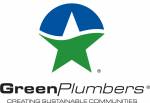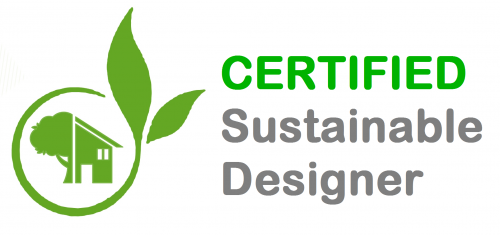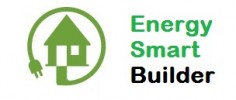Building with Hemp
As the world shifts towards more sustainable and eco-friendly practices, the construction industry is exploring innovative materials to reduce its environmental impact. Hemp, a versatile and renewable resource, has gained attention as a sustainable building material. This article delves into the reasons behind hemp's sustainability, the various types of hemp construction, and methods for incorporating hemp into the building process.
Why Hemp is Sustainable for Building
-
Renewable Resource:
- Hemp is a fast-growing plant that matures within a few months, making it highly renewable.
- Its cultivation requires minimal water and no pesticides, making it an environmentally friendly alternative to traditional construction materials.
-
Carbon Sequestration:
- Hemp plants absorb carbon dioxide (CO2) during their growth, acting as a carbon sink.
- When used in construction, hemp materials continue to sequester carbon, contributing to the reduction of greenhouse gas emissions.
-
Energy Efficiency:
- Hempcrete, a popular hemp-based construction material, has excellent insulation properties.
- Buildings constructed with hempcrete require less energy for heating and cooling, leading to overall energy efficiency.
-
Biodegradability:
- Hemp-based materials are biodegradable, reducing the environmental impact at the end of a building's life cycle.
- Unlike some traditional construction materials that contribute to landfill waste, hemp products break down naturally.
-
Diverse Applications:
- Hemp fibers and hurds (the woody inner fibers) can be used in various construction applications, including insulation, structural elements, and finishing materials.
- The versatility of hemp allows for its integration into different stages of the construction process.
Types of Hemp Construction
-
Hempcrete:
- Hempcrete is a mixture of hemp fibers, lime, and water.
- It is a lightweight, breathable, and insulating material used for walls, floors, and roofs.
- Hempcrete has a unique ability to regulate humidity, providing a comfortable indoor environment.
-
Hemp Fiberboard:
- Hemp fibers can be processed into fiberboard for use in construction.
- Hemp fiberboard is a sustainable alternative to traditional wood-based fiberboards.
- It is suitable for insulation, partition walls, and ceiling applications.
-
Hemp Insulation:
- Hemp fibers can be transformed into insulation material for walls, roofs, and floors.
- Hemp insulation has excellent thermal and acoustic properties.
- It is resistant to pests, mold, and mildew, contributing to healthier indoor air quality.
-
Hemp Plaster:
- Hemp fibers and lime can be combined to create a sustainable plaster for walls and ceilings.
- Hemp plaster provides a breathable surface that regulates moisture.
- It offers a natural and aesthetically pleasing finish.
-
Hemp-based Structural Elements:
- Some construction projects utilize hemp fibers in combination with other materials to create load-bearing structural elements.
- Hemp-based composites can be used for beams, columns, and other structural components.
Methods for Building with Hemp
-
Hempcrete Construction:
- Mix hemp fibers, lime, and water in the correct proportions.
- Form the mixture into blocks or apply it directly to the framework as a cast.
- Allow the hempcrete to cure, gaining strength over time.
-
Hemp Fiberboard Installation:
- Cut hemp fiberboard panels to the desired size.
- Affix the panels to walls or ceilings using appropriate adhesives or fasteners.
- Finish the surface as needed, considering hemp-based plasters or paints.
-
Hemp Insulation Application:
- Install hemp insulation between wall studs, in roof spaces, or under floors.
- Ensure a snug fit to maximize insulation effectiveness.
- Combine hemp insulation with other materials if necessary.
-
Hemp Plastering:
- Mix hemp fibers with lime to create a plaster mixture.
- Apply the hemp plaster to walls or ceilings using traditional plastering techniques.
- Allow sufficient drying time before finishing or painting.
-
Structural Elements with Hemp Composites:
- Combine hemp fibers with other materials like resins or binders to create composite materials.
- Shape the composite materials into the desired structural elements, such as beams or columns.
- Follow industry-standard practices for structural construction.
Challenges and Considerations
-
Regulatory Approval:
- Hemp construction materials may face regulatory challenges in some regions.
- Ensure compliance with local building codes and regulations before incorporating hemp into construction projects.
-
Cost Considerations:
- While hemp is a sustainable material, the initial cost of hemp-based construction materials may be higher than traditional alternatives.
- Consider long-term benefits, including energy savings and environmental impact, when assessing overall costs.
-
Moisture Management:
- Hemp-based materials, especially hempcrete, are highly absorbent.
- Proper moisture management and detailing are crucial to prevent issues like mold growth.
-
Availability of Materials:
- The availability of hemp-based construction materials may vary by region.
- Plan ahead and source materials from reliable suppliers to ensure a steady supply.
Hemp holds great promise as a sustainable building material, offering a range of eco-friendly options for construction. From hempcrete to fiberboard, the versatility of hemp enables its integration into various stages of the building process. As the construction industry continues to evolve towards sustainability, hemp stands out as a renewable resource that addresses both environmental concerns and the need for energy-efficient structures.
Above: The hardest part of the building to install Hempcrete is when the roof is on. Easy when pumped with air. Hempcrete Australia has worked hard with it's affiliates to get the technology to perform in such a way that it is efficient and a cost effective Hempcrete installation method.









